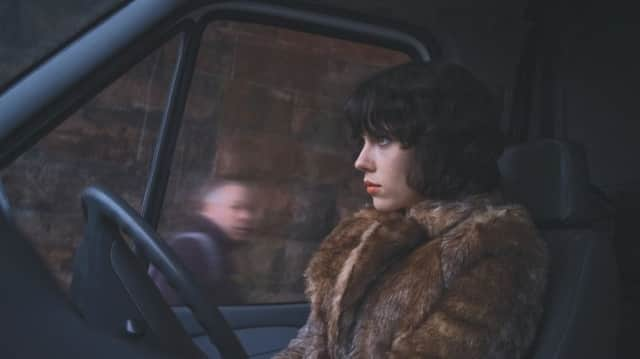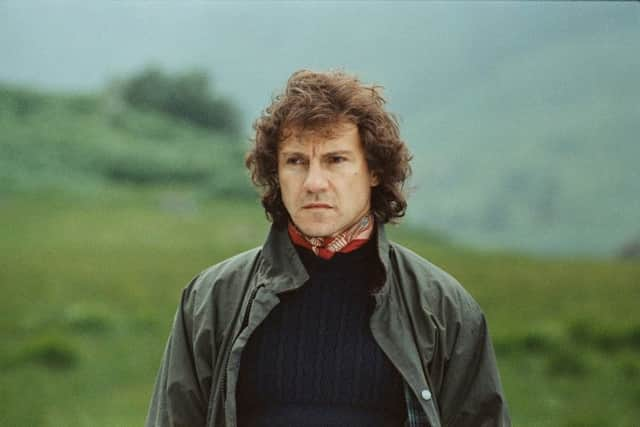The strangest Scottish films ever made


OVER the years, Scottish cinema has a projected a Janus-faced versatility. On the one hand, some of the country’s most famous films tap into the things that tourists love – history, fantasy, romance, picture-postcard scenery. (Braveheart and Brigadoon are among the most famous examples.) Then there’s the kitchen sink-bound, jet black comedy/drama (sometimes, the difference is negligible) that Shallow Grave, Trainspotting, and more recently, Red Road pushed to the fore. Lots of films made in Scotland fall somewhere between these two opposite ledges, but a few of them are so unique that, in a Scottish context at least, they don’t belong to any category except their own. They’re strange, innovative, a bit daft, and, most important of all, utterly entertaining.
The Wicker Man (1973)
Often considered one of the finest horror movies ever, The Wicker Man portrays the Hebridean Isles as an alien place, home to sinister Celtic magic and rituals. The story follows Sergeant Howie in his investigation of a disappearance of a young girl on the island of Summerisle, who finds himself in the clutches of an ungodly secret pagan society.


Advertisement
Hide AdMany scenes from The Wicker Man have gone on to become iconic images of Scottish cinema, surpassing its lukewarm reception at the box office. The burning of the wooden totem is recreated annually at Wickerman Festival (but not this year).
Sir Christopher Lee regarded his role as the wild-haired Lord Summerisle as one of his finest performances, though not everyone involved had such fond memories of their time on set. Swedish actress Britt Ekland described Galloway as “the bleakest place on Earth.”
Black Angel (1980)


Black Angel was the directorial debut of Star Wars art director Roger Christian, who was commissioned by George Lucas to make a featurette that would be screened prior to The Empire Strikes Back. The resulting short film told the story of medieval knight Sir Maddox, who returns from the Crusades to find his family gone and then enters a mystical realm to fight the titular knight. The 25-minute short film was shot at Eilean Donan in the West Highlands, which Christian said was one of the first times that many of the locations in this spectacular region had ever been put on film.
Although Black Angel was screened in cinemas across the UK, the loss of the original negatives meant that there was never a home video or DVD release. After the film was rediscovered in 2015, Christian uploaded it YouTube and started a crowdfunder campaign to make a feature-length version.
Despite being something of a tidbit in the history of Star Wars, it’s worth acknowledging that George Lucas loved the slow-motion action sequences of Black Angel so much that he re-purposed the effect in The Empire Strikes Back.
Death Watch (1980)
An overlooked science fiction tale well ahead of its time, Death Watch is a film based on a novel by DG Compton, in which a terminally ill woman (Romy Schneider) has her last moments secretly filmed by Roddy (Harvey Keitel), an acquaintance who has had a camera installed directly into his eye, meaning whatever he sees is beamed out live to the TV-watching public.
Advertisement
Hide AdDeath Watch may have made little impact on the UK box office, but it proved to be popular in the director’s native France and has since grown into something of a cult classic.
The film was shot in various locations around Glasgow, including the Necropolis, Glasgow Cathedral, the City Chambers and the River Clyde. French director Bertrand Tavernier told film publication Sight & Sound that Death Watch would not have been possible without the city: “After visiting Glasgow, I immediately bought the rights to the book... I liked Edinburgh, but Glasgow came as a shock. I liked its many different colours, the beautiful Mackintosh buildings. I loved the atmosphere, the feel of a working class city.”
Highlander (1986)
Advertisement
Hide AdA bizarre success story, Highlander was a fantasy epic built on the premise of a group of immortal warriors attempting to behead each other in swordfights.
American scriptwriter Gregory Widen devised the idea after a trip to Edinburgh and the National Museum of Scotland, where a suit of armour inspired him to write the story of Connor MacLeod (Christopher Lambert), a Scottish immortal originally from a village near Loch Shiel, who now resides in a stylised ‘80s New York City as an antiques dealer.
Despite a supporting role from Sir Sean Connery, Highlander proved to be a flop at the US box office and received a heavy panning from critics, partly down to the time-jumping plot, cheesy dialogue and the fast-cut camera angles of former Bonnie Tyler video director Russell Mulcahy.
Highlander did, however, become a hit across Europe and gained cult status in the US, which led to various sequels, books and even a TV series.
Under The Skin (2013)
Scarlett Johansson plays a mysterious extraterrestrial female prowling the streets of Glasgow in search of lonely Scottish men to seduce and harvest.
The film, directed by Jonathan Glazer, was over a decade in the making, but the film allows for spontaneity, blurring the line between scripted moments and reality. (A number of men seen in the back of a van are unwitting members of the public, only told after the fact that they were part of the film.)
Advertisement
Hide AdJohansson’s alien seductress was a throwback to a series of shlocky sci-fi films shot in the ‘50s, all made in the US but set in Scotland; her character has echoes of the leather-clad antagonist of David MacDonald’s Devil Girl From Mars.
Although it had a fairly modest budget of £8 million, Under The Skin failed to “wash its face” at the box office, taking backing around £5 million. In critical circles, though, its appeal was almost unanimous.
